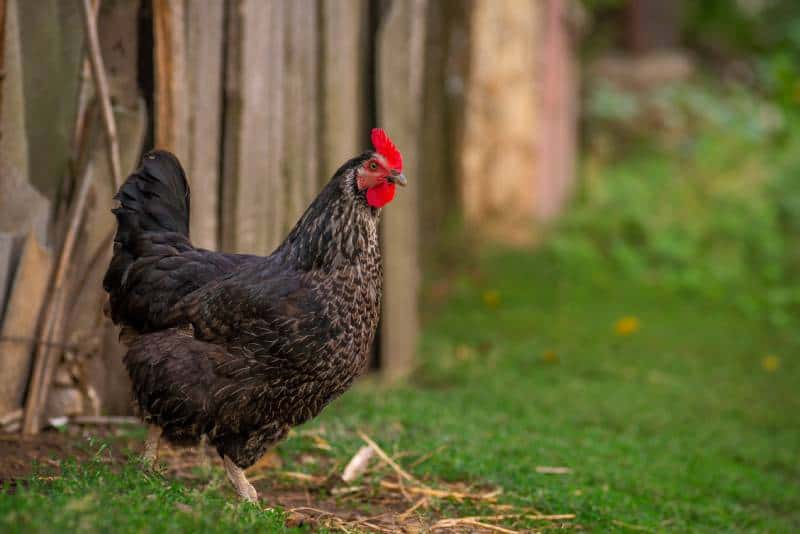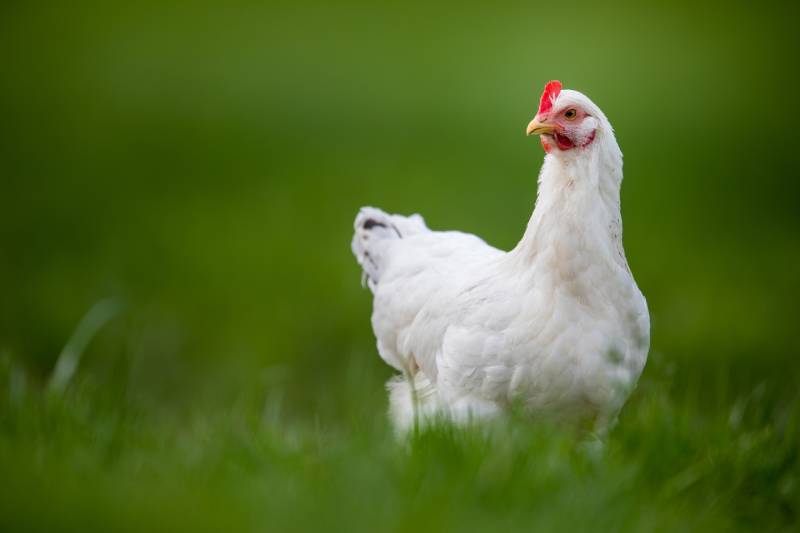Written by Dr. Luqman Javed
Maybe you’ve heard the term “broiler chicken” and you aren’t sure if it’s a breed or group of chickens. This term is actually a general way of saying “meat production chickens,” but doesn’t refer to any one breed of chicken in particular. Several chicken breeds are considered broilers.
So, what are broiler chickens all about, how are they raised, and what is their life like? If you want the answers, you definitely came to the right place.

What Are Broiler Chickens?
The term “broiler” is not a breed name but rather a group description. Broiler chickens are poultry raised specifically for the purpose of meat. They typically grow very quickly, a trait that’s attributed to generations of selective breeding for size and rapid growth. This enables them to reach a slaughter weight in as short of a time span as possible, allowing the meat production industry to continuously meet the demand of meat by consumers (chicken meat is the most demanded meat in the world).
Broilers that are raised specifically for meat production are usually slaughtered when they are anywhere from 40–60 days old, depending on the standard policy or practice of the area where they are raised. Most countries impose rules on production farms which standardize the age of these birds at slaughter.
The primary selection criteria for broiler breeds is their feed conversion ratio (FCR), which refers to the amount of food they consume to put on a kilogram of weight. For example, an FCR of 1:1 means the breed is able to convert 1 kilogram (2.2 pounds) of feed into 1 kilogram (2.2 pounds) of weight. The more efficient the FCR, the more profitable a breed can be. The best broilers in the world have an FCR of 1.38.
Given the increased pressure on the animal production industry to keep up with the demand of meat, the entire process of broiler farming is very streamlined. Often, entire batches of birds of the same age are raised together until they are ready for slaughter. Once they’re ready to be butchered, their farm house is often cleaned, sanitized, and then quarantined for a short period of time before a new batch of birds is brought in.

The Lifespan of Broiler Chickens
All breeds that are used for the purpose of broiler chickens can live much longer than their typical slaughter age. Generally speaking, their lifespan is cut drastically short when they’re raised specifically for meat in a commercial farm. While the average lifespan of a chicken would be anywhere from 8–10 years, a broiler chicken rarely lives past 60 days of age. In the US, the typical slaughter age is 47 days, while in the EU the slaughter age is 42 days.

Broilers vs. Layers
Broilers are for meat production while layers are for egg production. The thing is, layers can be meat chickens and vice versa. Breeds raised for both purposes (often those kept as pets by smallholder farmers) are sometimes referred to as dual purpose breeds.
The production dynamics of layers are different from broilers. Layers tend to pack weight much slower than broilers do and are usually active layers for a period of about 2 years or so.
In addition, layer birds are all hens, whereas broiler birds can be either male or female.
Examples of Broiler Breeds
The following breeds are considered to be broilers.
- Bresse
- Arbor Acres
- Cornish Cross
- Kosher King
- Dark Cornish
- Orpington
- Jersey Giant
- Buckeye
- Delaware

Can Broilers Also Lay Eggs?
Meat chickens can absolutely lay eggs, but they generally have low egg production. Chickens that are dual-purpose can stun owners with their high meat content and exceptional laying ability.
But chickens that serve as meat and nothing more are generally somewhat ineffective egg producers. However, for a pet owner, the difference isn’t relevant, and the economics of their feed cost versus egg production is only ever relevant for commercial purposes.
How Are Broiler Chickens Raised?
Broiler chickens are usually raised in large flocks placed in a massive farmhouse. They’re usually not placed in cages and have an environment that’s typically automated for feed timings, temperature control, light control, and water availability. These farmhouses also have strict biosecurity measures, as the introduction of a disease to one bird can be devastating for the entire flock.
To improve efficiency of production, and to protect the flock from diseases, the system used by most broiler farms is often called an “all-in-all-out” system. This system focuses on raising a batch of chickens of the same age until they reach slaughter size before harvesting all the individuals and clearing the entire farm house.

Other farmers (particularly smallholders) tend to raise broilers in different methods. They may have free-ranging birds or might focus on a specific selling point for their flock (for example, antibiotic free birds). These setups typically aren’t as profitable as larger scale operations; however, they too can be profitable.
Certain smallholders are able to set up their small farm in a way that allows their birds to be self-sustaining. In other words, the profit they make from selling some of their flock covers the upkeep of the birds they choose to retain as backyard pets. This allows them to have the experience of both a pet keeper and a farmer. Smaller flock sizes allow them more time to pay special attention to their pets as well.
- Related Read: Buff Orpington Chicken

Conclusion
The term “broiler” isn’t a breed of chicken but rather a term used to describe poultry raised specifically for meat. Broiler breeds are typically large, fast-growing birds that aren’t renowned for their egg laying ability.
Nonetheless, many breeds of chicken are dual-purpose, allowing smallholder farmers to both enjoy their companionship as pets, profit from their egg production, and use them for meat production as well. These factors might play a part in your decision to adopt chickens if you’re also looking to set up a side stream of revenue from your backyard farm.
- Related article: Do Chickens Have Nipples? What You Need to Know!
Featured Image Credit: l i g h t p o e t, Shutterstock
